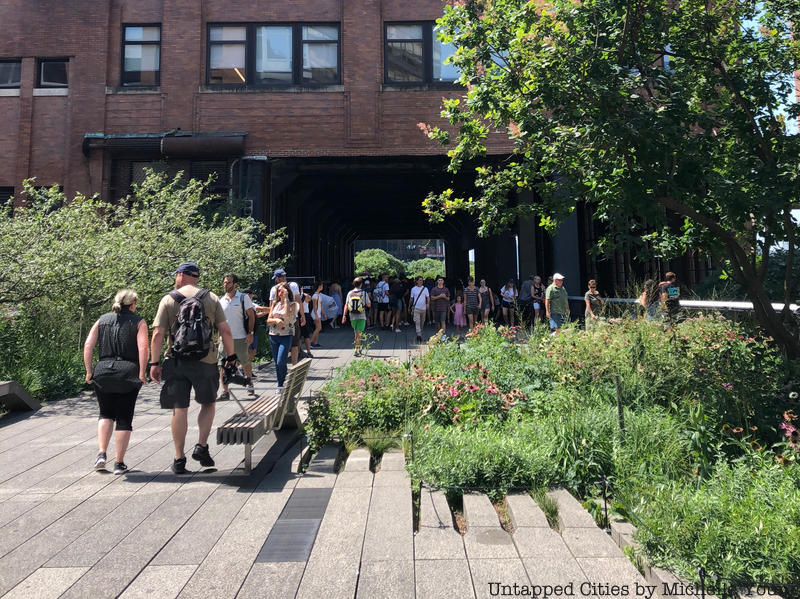2. The High Line

Easily Manhattan’s most recognizable elevated green space, the High Line was originally a freight viaduct for the New York Central Railroad. The elevated train line was known then as the West Side Elevated Line and was constructed in response to the high number of pedestrian deaths along 10th Avenue (nicknamed “Death Avenue”) which was shared by freight trains, trucks, carts, automobiles and pedestrians. Starting in the 19th century, a team of “West Side Cowboys” would assist traffic by waving flags on horseback to alert pedestrians of oncoming freight trains. The West Side Elevated Line opened in 1933 and operated in until the early 1980s, rendered obsolete by trucking.
Almost immediately following the closing of the rail line, calls for its reuse emerged. Chelsea resident and activist Peter Obletz launched a campaign to “Save the Tracks,” and formed The West Side Rail Line Development Foundation. Still, in the 1990s, five blocks of the High Line were demolished and Mayor Rudolph Guiliani signed a demolition order for the rest of the structure. In 1999, Joshua David and Robert Hammond created the non-profit conservancy, Friends of the High Line, and launched a visioning competition which would eventually lead to support from Mayor Michael Bloomberg and the New York City Council.
The elevated park was designed by landscape design firm James Corner Field Operations, architects Diller Scofidio + Renfro, and planting designer Piet Oudolf. The success of The High Line as a public space, and as a real estate and neighborhood regenerator, have inspired many cities around the world to repurpose their elevated rail structures.
The High Line is also home to many temporary and longer-term art installations and serves as a host for performances. Next up in October is an ambitious work, Mile-Long Opera which will feature 1,000 singers in a single performance along the High Line.





